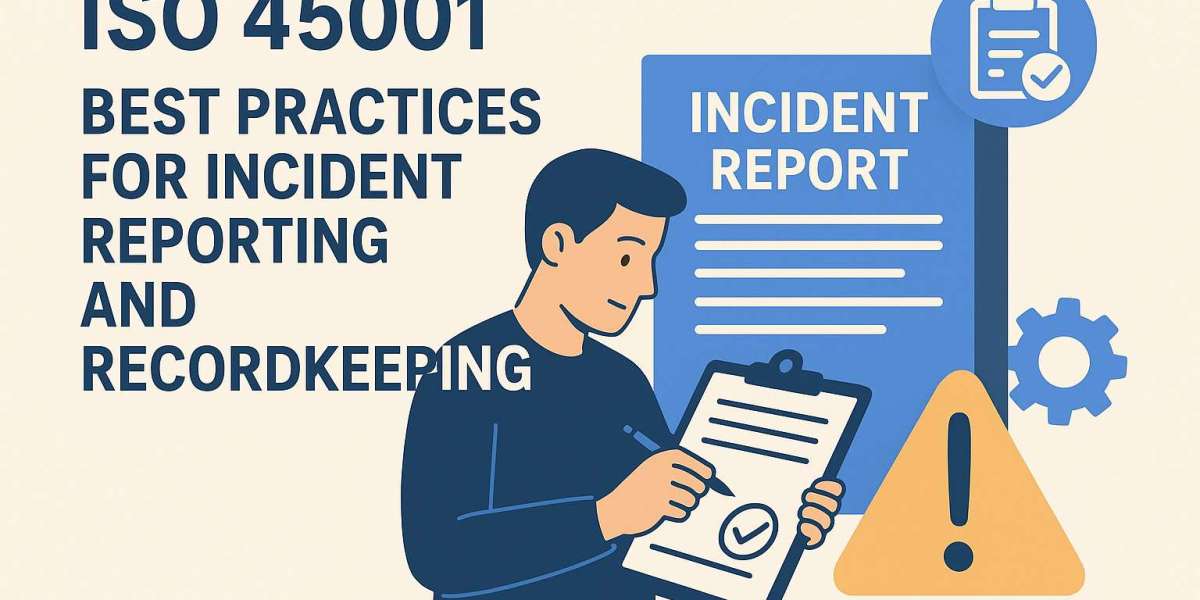In any industry, incident reporting and recordkeeping are key to workplace safety and ISO 45001 compliance. ISO 45001 is an international standard for occupational health and safety management, and it requires organizations to document incident management processes and keep detailed records of any work-related accidents or near-misses. Well-structured incident reports and comprehensive documentation are essential components of an organization’s ISO 45001 documentation, because they help management learn from each event and prevent repeat occurrences. By capturing incidents accurately and maintaining organized records, a company demonstrates due diligence, meets regulatory requirements, and lays the groundwork for continuous improvement in safety.
Key Practices for Incident Reporting
- Encourage prompt reporting of all incidents and near-misses. As soon as an incident occurs (even a minor or near-miss), employees should report it. Timely reporting ensures that facts and evidence are fresh, making investigations more accurate. A clear policy and an easy-to-use reporting procedure help make this the expected norm.
- Record comprehensive details. Each report should include who was involved, what happened, when and where it took place, and how and why it occurred. Detailed descriptions—such as equipment involved, activities underway, and environmental conditions—help investigators understand root causes. Encouraging workers to be specific and thorough prevents gaps in information.
- Use standardized forms or systems. Implementing a consistent incident-reporting form or digital system ensures that all necessary information is captured. Checklists or software templates guide the reporter through each required field. Standardization also makes it easier to track trends over time, as data are recorded uniformly.
- Foster a no-blame culture. Make it clear that reporting incidents is a positive and expected action, not a punishable one. Employees should feel safe and supported when they report mistakes or hazards. When staff know they will not be punished for reporting, they are far more likely to come forward quickly and honestly. Leadership should acknowledge reports and emphasize that lessons learned from incidents benefit everyone’s safety.
- Investigate promptly and thoroughly. Once an incident is reported, assemble a qualified team to investigate without delay. Quickly interviewing witnesses and gathering evidence (such as photos of the scene) preserves details. A systematic investigation involves determining the underlying root cause, not just the immediate error. Document every step of the investigation, including interviews and findings.
- Take corrective and preventive action. Every incident report should lead to action. After identifying root causes, implement fixes to prevent recurrence. Record the corrective actions taken and who is responsible for them. Close the loop by verifying that actions were completed. Also consider preventive measures that address similar hazards before they lead to incidents. Tracking these steps in reports and follow-up notes turns incident management into a cycle of improvement.
Common Pitfalls to Avoid
- Delayed or missing reports. Waiting to report an incident can lead to lost information and a weaker investigation. Never let reporting lag. Even if details seem small, report them immediately.
- Incomplete reports. Omitting key information (like the time, location, or sequence of events) can stall investigations. Avoid vague descriptions. If a report template is used, make sure every required section is filled out.
- Neglecting near-misses. A “near-miss” is an unplanned event that could have resulted in injury or damage. Ignoring near-miss reporting forfeits valuable warnings. Always treat near-misses as seriously as actual accidents, and record them in the same way.
- Blame culture. Punishing or shaming those who report incidents discourages reporting and erodes trust. Do not single out employees in reports or during reviews. Focus on fixing the system, not assigning fault to individuals.
- Disorganized recordkeeping. Throwing papers in a drawer or scattering digital files makes it hard to retrieve information. Poor organization can result in lost reports or overlooked corrective actions. Use a logical filing system or a centralized database so records are secure and easily accessible.
- Failing to act on findings. Recording an incident but then forgetting about it wastes the effort. If corrective actions are not completed or reviewed, the same issue may happen again. Always check that recommended fixes were implemented and share outcomes with the team.
Effective recordkeeping goes hand-in-hand with incident reporting and ISO 45001 compliance. All incident reports, investigation results, and follow-up actions should be stored in an organized manner. This means keeping a central log or database – whether electronic or paper – where records can be easily retrieved. Well-organized records demonstrate compliance during audits and inspections, and they enable management to analyze incident data for trends. When workers see that reports are logged and addressed, it reinforces a safety-focused culture and shows that management takes incidents seriously.
- Maintain a central archive. Use a dedicated filing system or software for all incident-related documents. Ensure it is backed up and protected. Avoid storing reports on personal desks or random folders.
- Follow retention policies. Keep records for the period required by regulations or company policy. For example, safety incidents may need to be logged for several years. Proper retention proves compliance and provides history for long-term analysis.
- Ensure accessibility and security. Authorized personnel should be able to retrieve records when needed (for audits or investigations) but with controls in place so that records cannot be altered or lost.
- Use data for improvement. Regularly review your incident logs to spot recurring issues or new hazards. Discuss patterns in safety meetings and update training or procedures as needed. Sharing these lessons learned builds a positive safety culture.
Summary
Thorough incident reporting and diligent recordkeeping are foundational to any effective ISO 45001 health and safety program. By following best practices—encouraging immediate and detailed reports, conducting careful investigations, and keeping well-organized records—organizations can prevent repeat incidents and demonstrate that they take safety seriously. Avoid common pitfalls like underreporting, incomplete forms, or scattered files. Remember that ISO 45001 documentation is only as good as the data it contains: accurate reports and accessible records show compliance and support continuous improvement. Ultimately, a culture that values reporting and documentation under ISO 45001 helps ensure a safer workplace for everyone.



